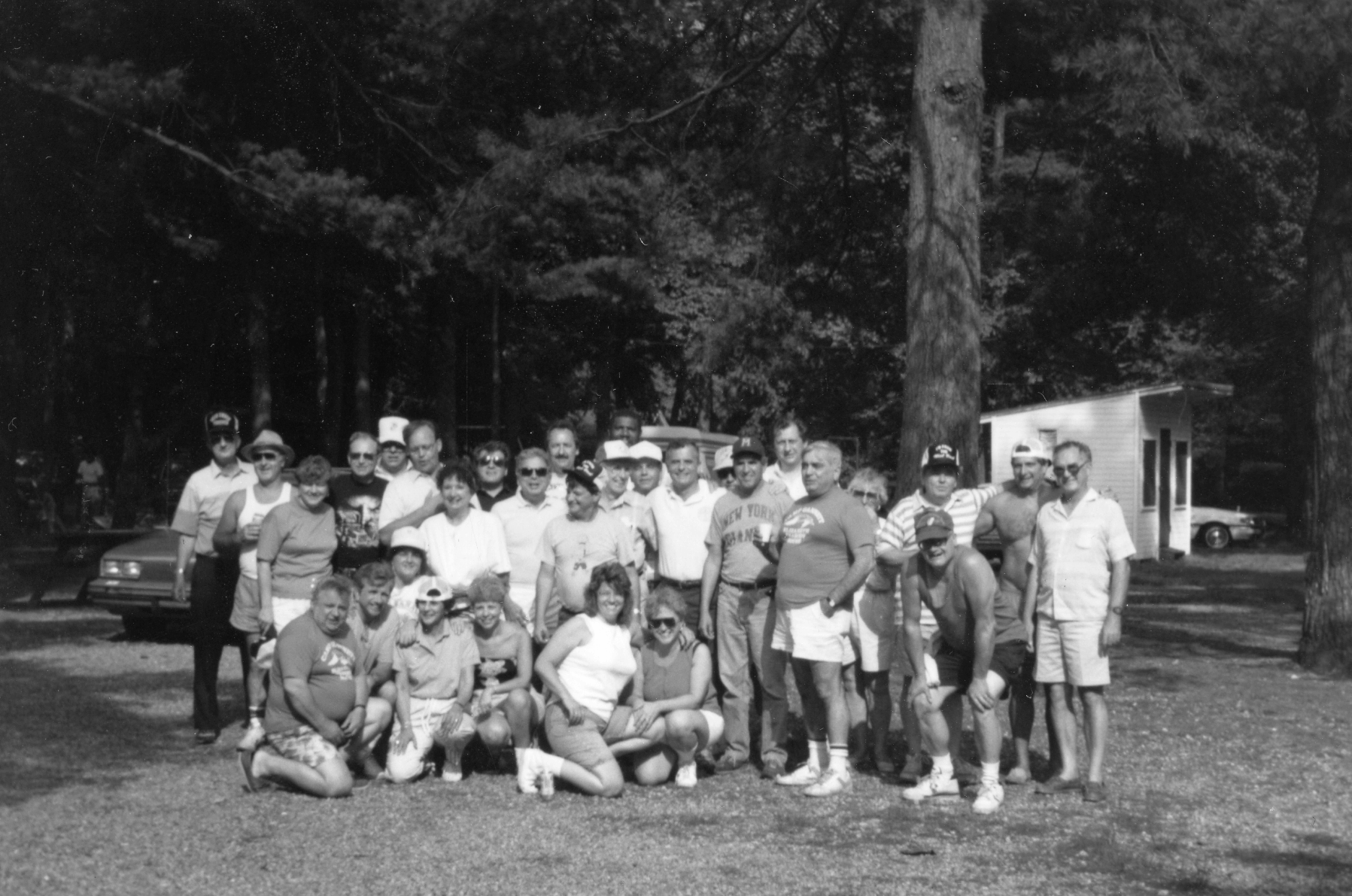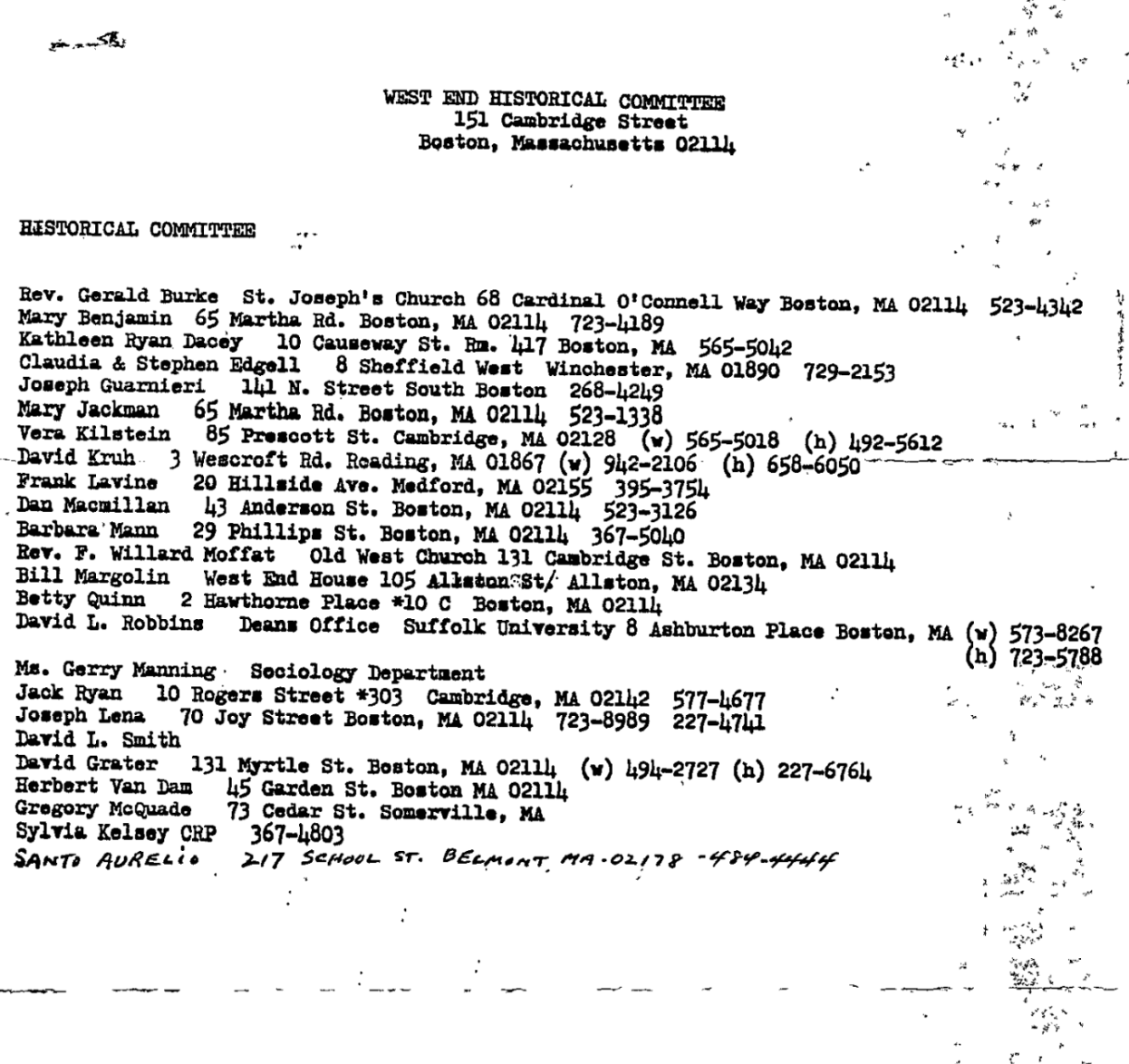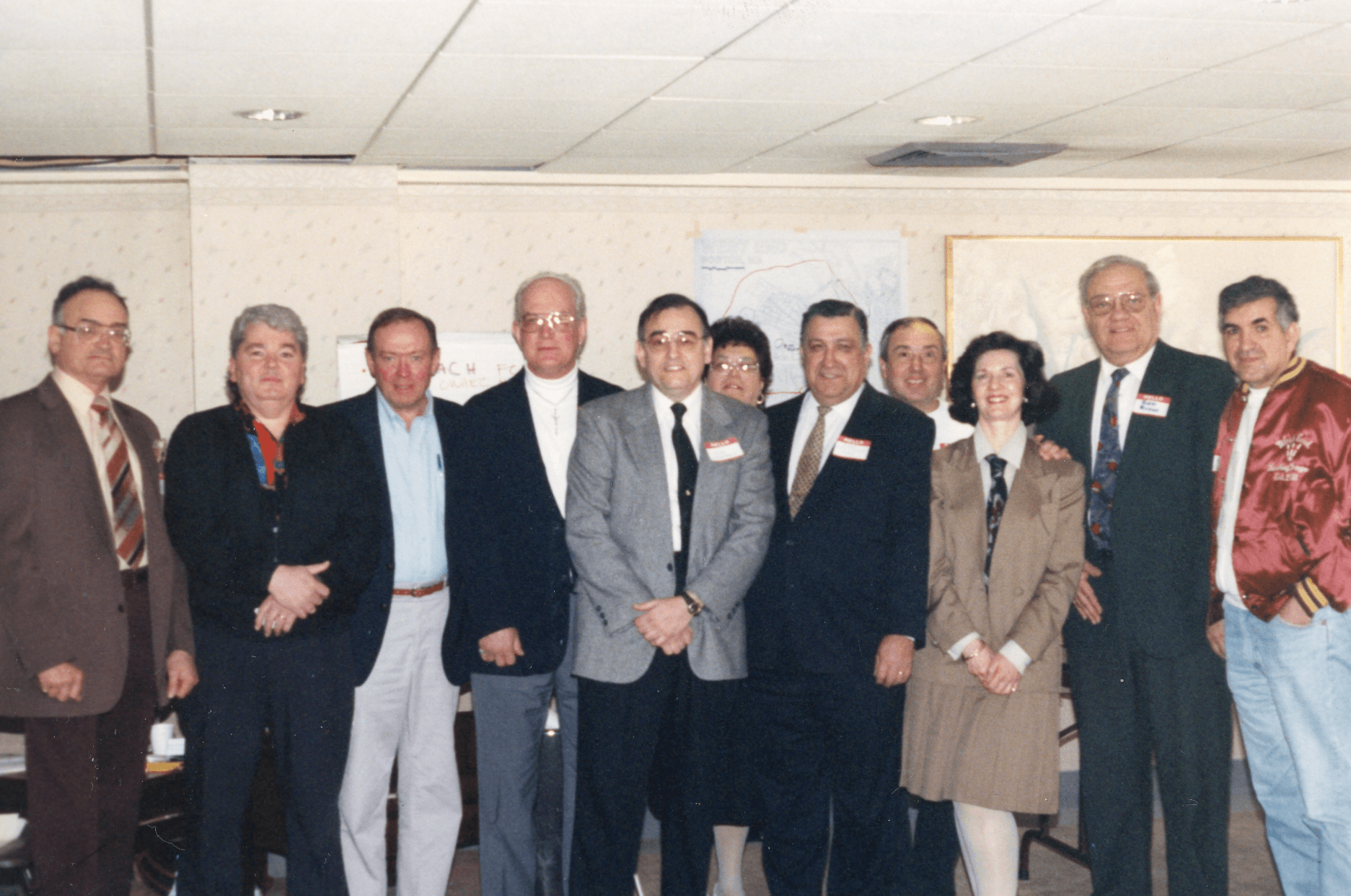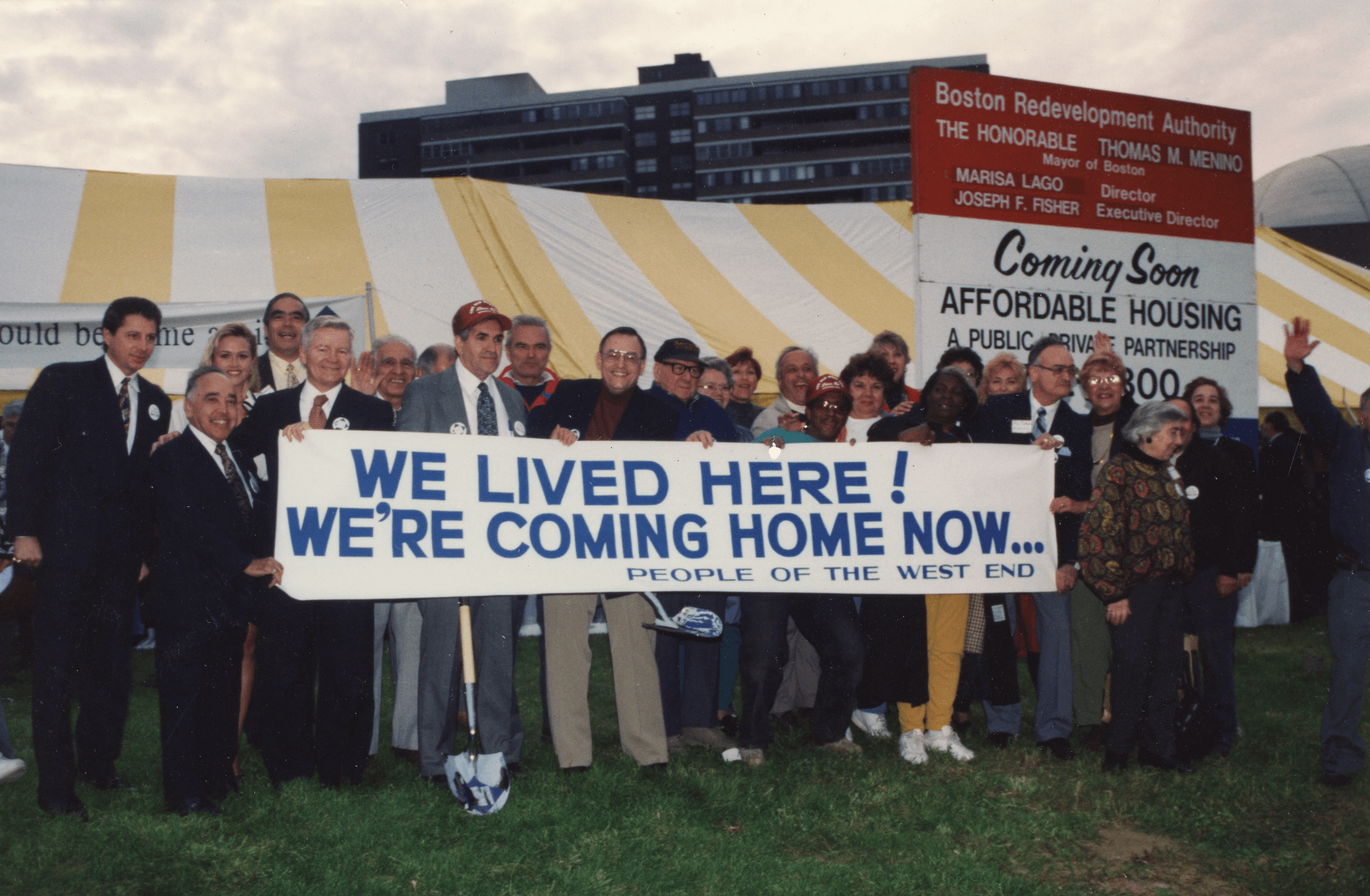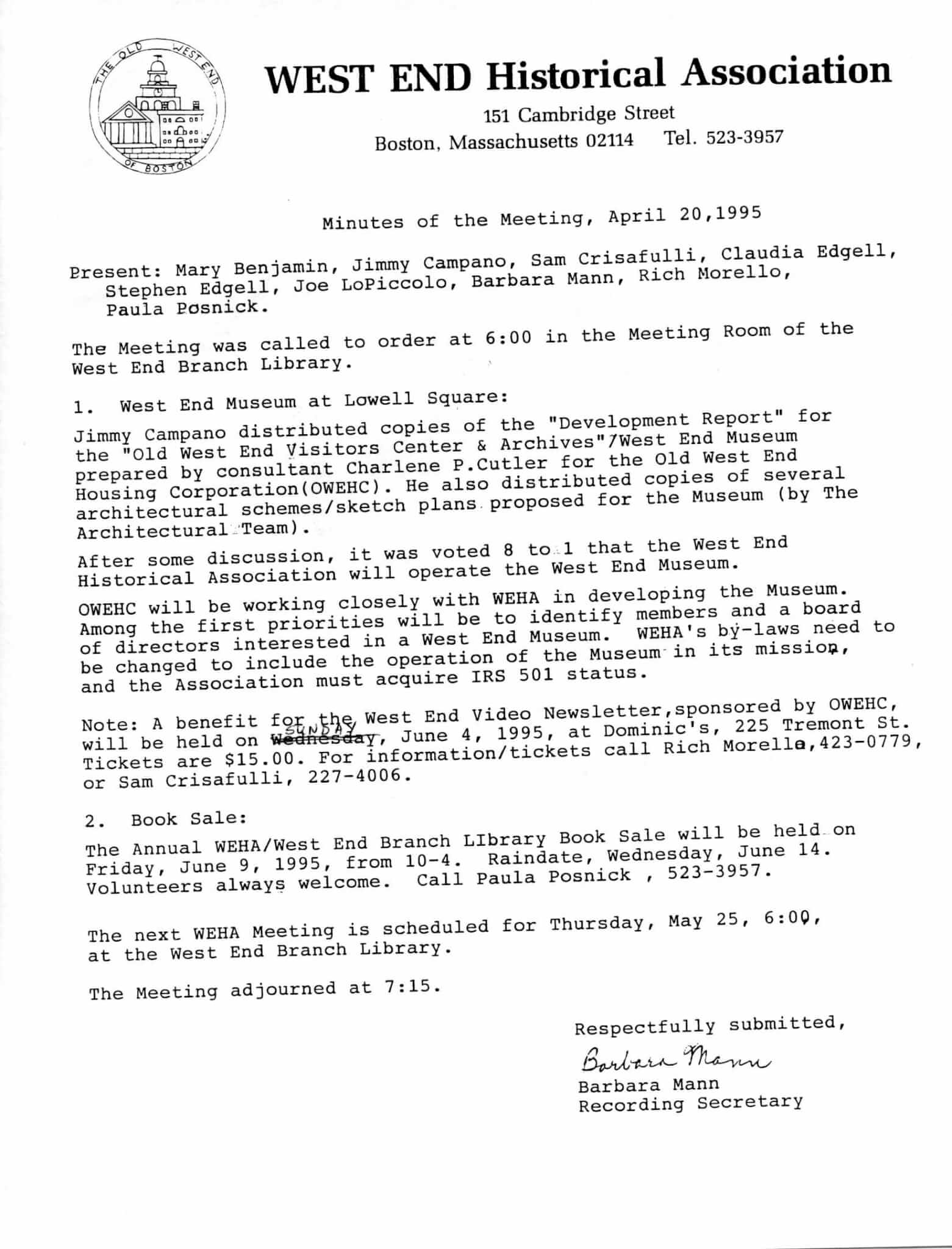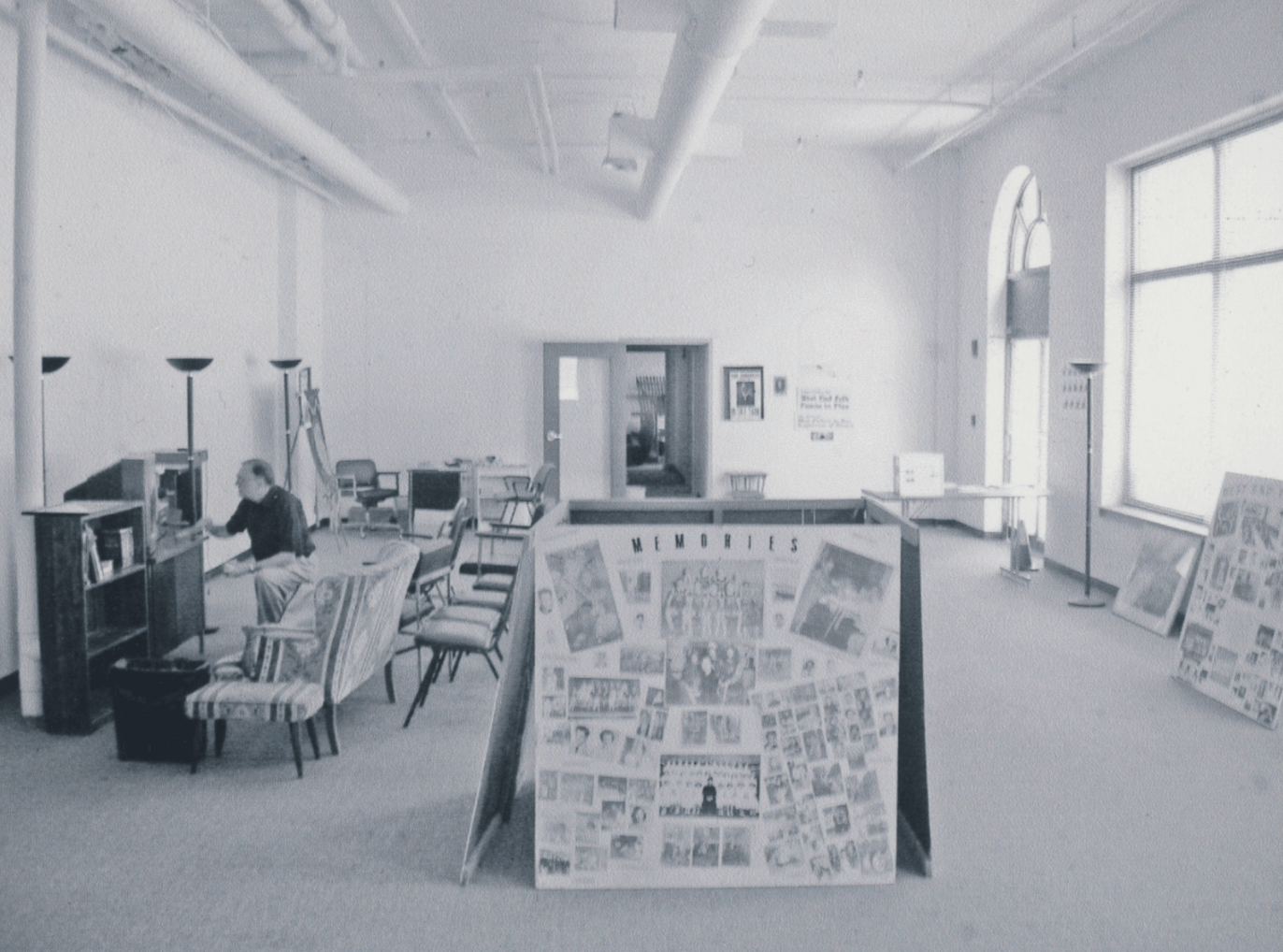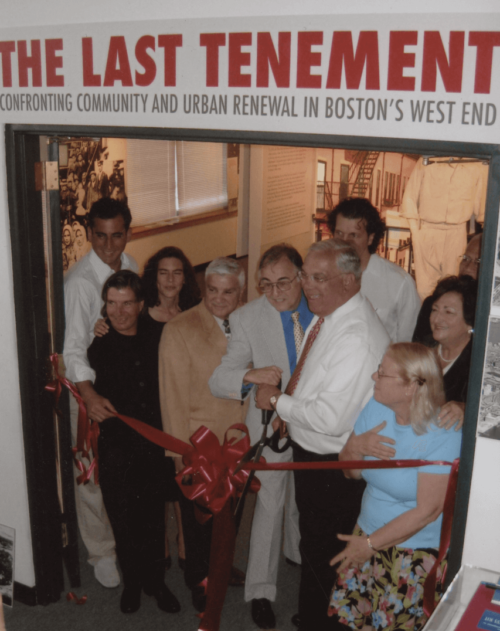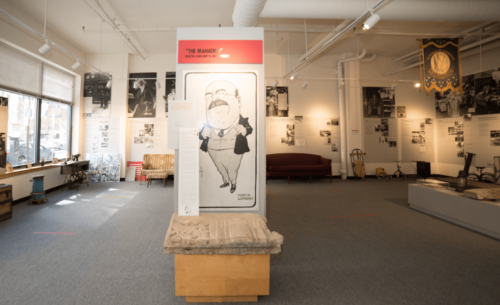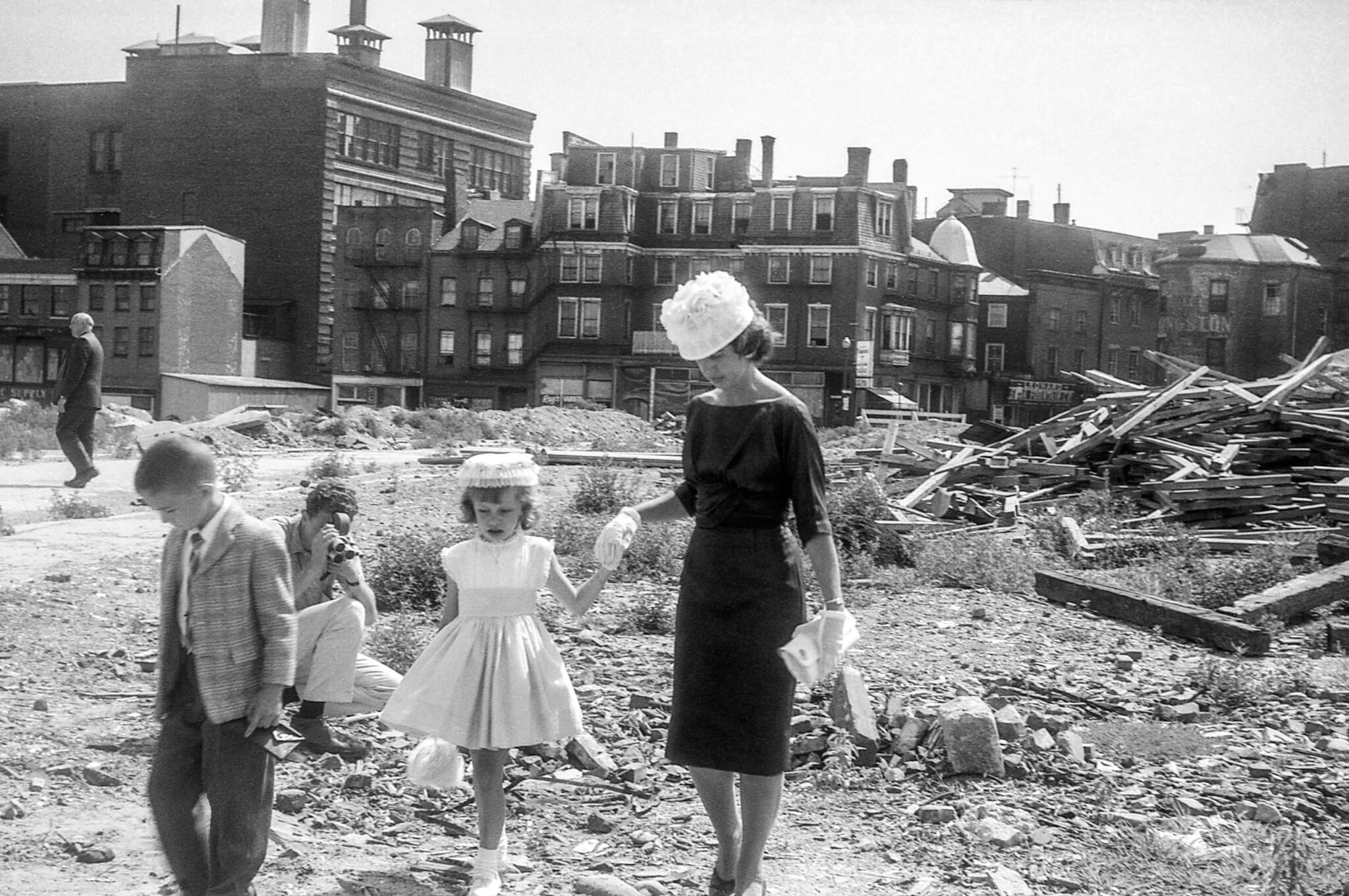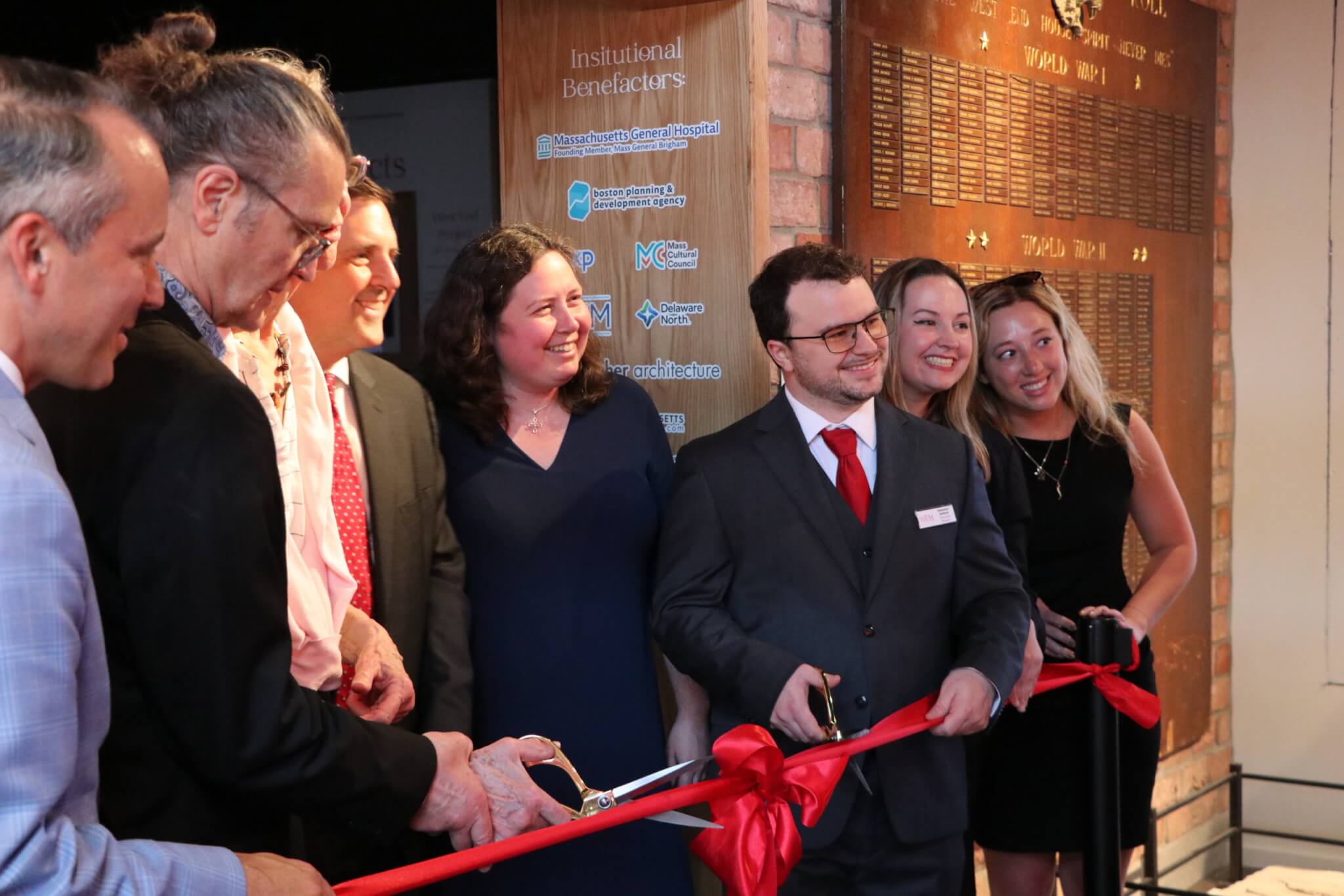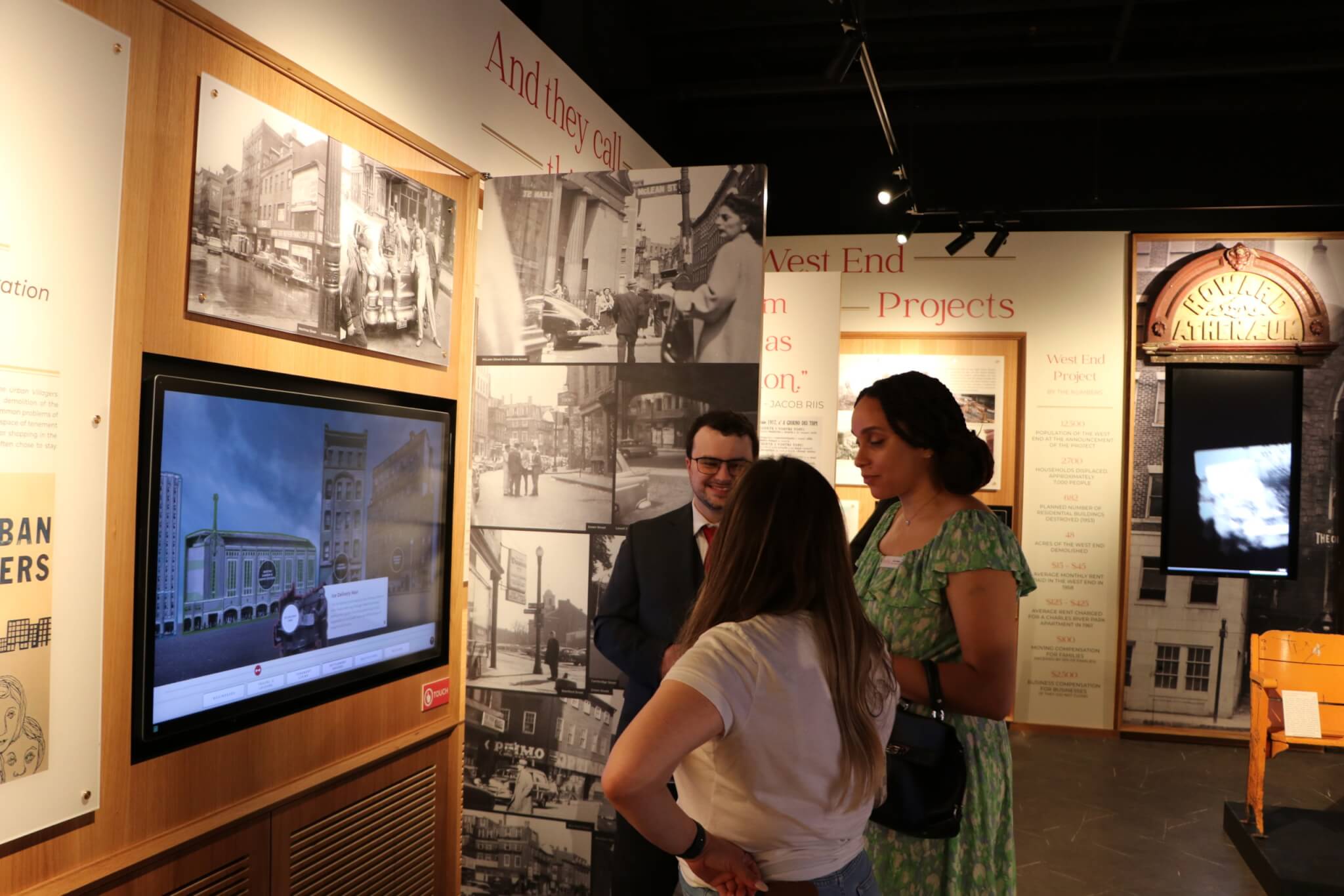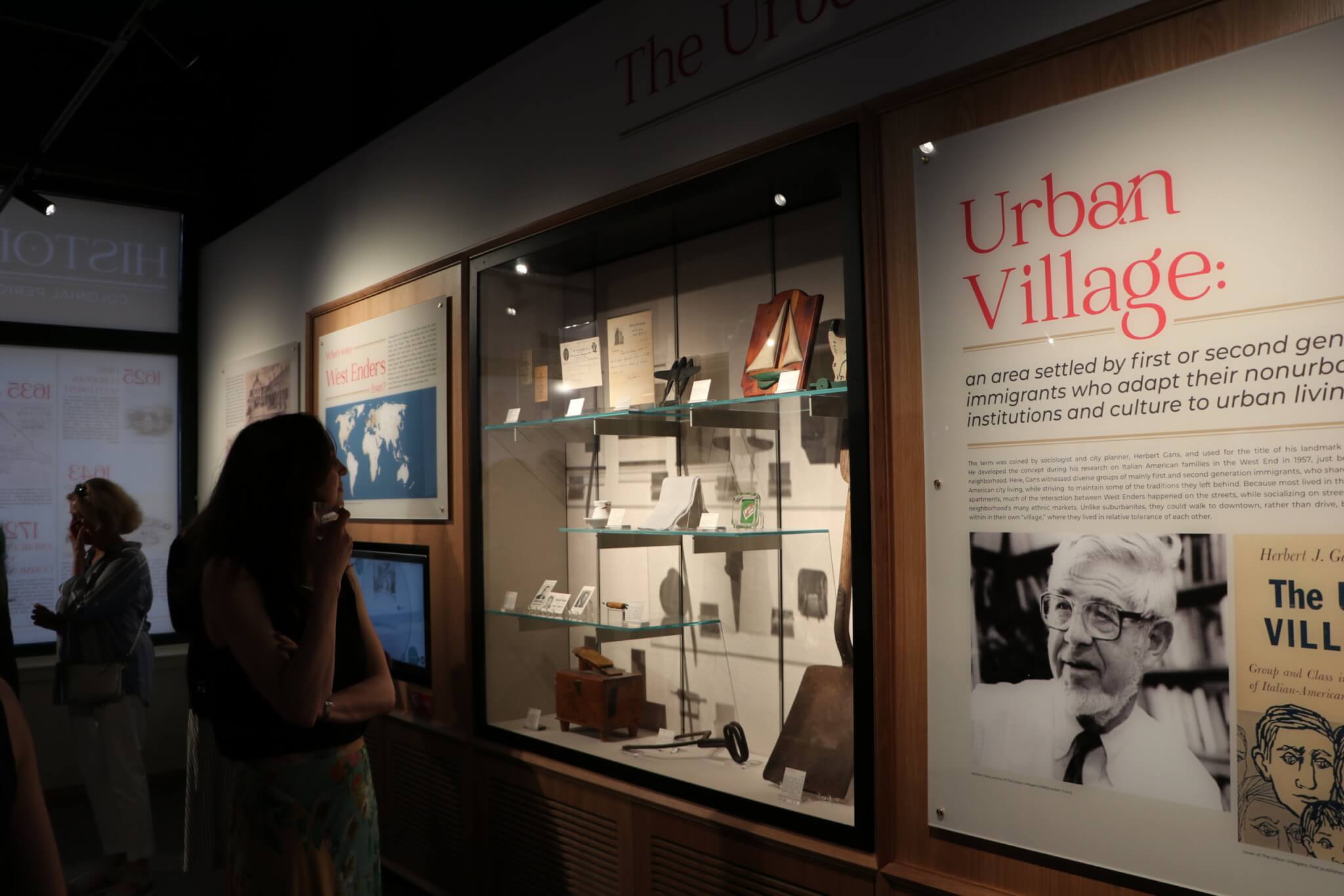The First Twenty Years of The West End Museum
For twenty years, The West End Museum has preserved the history of the West End and the memories of its residents, many of whom were displaced by an urban renewal project in the late 1950s which demolished their homes and destroyed their community. The journey from the time of the evictions to the opening of the Museum’s doors in 2004 was full of fits and starts, including long legal battles. In the end, the perseverance of the entire lost community, and a smaller number of its dedicated leaders, made The West End Museum a reality.
Following the West End’s demolition, members of the displaced community found various ways to stay connected with each other and honor their former neighborhood. Many participated in reunions at places like Camp Gannett (where some had attended summer camps in their youth), the Wonderland Boardroom in Revere, and on cruises in Boston Harbor. This urge to reunite and reminisce over their shared experiences inspired some to organize and take on more formal activities aimed at preserving the West End’s past and bringing justice to those who suffered from urban renewal.
In 1985, Jim Campano created The West Ender, a newsletter that acted as a forum for former West End residents to share memories and speak out against unfair development practices, past and present. With the help of Joe LoPiccolo and Raymond Papa, Campano complemented The West Ender with a video newsletter that appeared on Somerville Community Television. Other former West Enders and supporters founded the West End Historical Committee (later changed to the West End Historical Association[WEHA]) in 1987. This organization met at the West End Branch of the Boston Public Library, and was initially facilitated by one of its librarians, Paula Posnick. The purpose of the WEHA was to further develop and preserve the library’s existing multimedia collection of West End history, and to produce oral histories of former West End residents.
In 1988, Jim Campano and Joe LoPiccolo joined Bill Margolin, Claudia and Stephen Edgell, David Kruh, and the rest of the WEHA membership, and became leaders in the organization. Two years later, in 1990, the WEHA formally organized as an independent organization separate from the Boston Public Library, and added the presentation of material to the public to its mission statement. Now, as a public-facing entity, the WEHA was primed to become the intellectual seed of the future West End Museum. Members began to discuss the possibility of opening a museum, and the obvious need for a physical space. The work of another organization founded by former West Enders, the Old West End Housing Corporation (OWEHC), would provide that space.
OWEHC, a non-profit Community Development Corporation (CDC) formed in 1990, was the brainchild of Jim Campano, Joe LoPiccolo, attorney Frank Privitera, and others. Its mission was to bring displaced West Enders back to their old neighborhood by reclaiming a lot facing Lowell Square, the last unused parcel of land cleared during the West End urban renewal project. Together with the Urban Planning Office of the Archdiocese of Boston and Keane Development Corp., OWEHC convinced the Boston Redevelopment Authority (BRA) to sue the owners of the lot, Charles River Park Inc., and seize the land. On October 14, 1994, OWEHC leaders helped break ground on the future site of West End Place, with the dream of creating an eventual home for some of the original displaced community.
Before the opening of West End Place, however, OWEHC learned that returning West Enders would be denied guaranteed affordable units due to fair housing requirements. What followed was seven years of legal battles. Finally, in 2002, an agreement was reached between OWEHC and the owners of West End Place, in which OWEHC and West Enders lost their claim to affordable housing units (though received some preference for market rate units), but were awarded Unit 5, a street level storefront at West End Place for use as a community center/museum, and a second floor room for an archive.
A space for a visitor center/museum had been part of OWEHC’s original plan for West End Place, so fortunately some planning had been done before the 2002 settlement. In 1994, OWEHC had commissioned museum consultant Charlene Perkins Cutler to explore the feasibility of creating a new museum at West End Place using the combined resources of OWEHC and the WEHA. Cutler’s final report suggested that WEHA, the owner of archival material related to the West End, should operate the museum under the oversight of OWEHC, the prospective owner and manager of the physical site. Members of OWEHC presented proposals for a partnership to the WEHA, and at the WEHA meeting of April 20, 1995, members voted 8-1 to “administrate the West End Museum and Archives.”
Finally, on June 22, 2004, after years of dreaming, planning, and court battles, the West End Museum opened under the management of OWEHC with Jim Campano as its first Chief Executive Officer. The original exhibit consisted of a series of plywood boards covered in text and images, and guests could also watch The Lost Neighborhood, an ABC documentary on the West End and its destruction. As reported in a 2004 issue of The West Ender: “The hours will probably be from 12 noon to 6 p-m. daily. It will only be open for lectures, drop ins and research. Former West Enders are always welcome. Also, any West Ender who is an artist of any type (painter, sculpture, etc.) may display their art at the museum.” For the next three years, Campano and a team of volunteers established routines and policies, set up an archive, and collaborated with other West End organizations to lobby for the reestablishment of the West End as an officially-recognized neighborhood of Boston.
2007 brought dramatic change to the West End Museum with the acquisition of The Last Tenement exhibit, which was originally created by the Bostonian Society (now Revolutionary Spaces) and displayed in Boston’s Old State House in 1992 and 1993. The exhibit was designed as an “interpretation of Boston’s West End and the 1950s redevelopment project that demolished the neighborhood and dislocated thousands of Bostonians.” Exhibit creators Carolyn Hughes and Sean M. Fisher enlisted the help of many West Enders, including Jim Campano and Joe LoPiccolo, and respected experts like Herbert Gans, Marc Fried, and Chester Hartman. The purchase of the exhibit was made possible by a $40,000 grant from the Commonwealth of Massachusetts and facilitated by State Representative Paul Donato. After installation, the Museum held a grand reopening on October 28, 2007, featuring a ribbon-cutting by Jim Campano and Boston Mayor Thomas Menino. The reopening ushered in a new chapter for the Museum, built upon a professionally-designed exhibit.
The following years were marked with peaks and valleys for the West End Museum. Public program offerings grew with the introduction of historic walking tours; special events, such as West End Heritage Honoree nights; and a series of temporary exhibits, covering history, arts, music, and sports. Over time, however, OWEHC began to show strains in its organization, and thus its ability to efficiently manage the needs of the Museum. In order to ensure long-term sustainability, OWEHC board members voted in 2010 to allow the Museum to become its own self-governing entity. After applying for nonprofit designation with the Commonwealth in 2011, The West End Museum was born, with new bylaws and an organization guided by a dedicated board of directors. In the same year, Jim Campano stepped aside from the daily operation of the Museum, but stayed on as a board member ex-officio.
After its reorganization, The West End Museum was led by Richard Hartnett (2011), Duane Lucia (2012-2015), Susan Hanson (2015-2018), and again by Duane Lucia (2018-2021). During this period, The West End Museum continued its steady growth in programs and special exhibits; in collaborations; and in its online presence, through establishing a dedicated website and social media accounts. The public could now readily access historically significant images, such as the iconic Charles Frani Collection, oral histories on video, and documents related to the West End story.
The current generation of Museum leadership began in 2020, with the Board’s selection of Sebastian Belfanti, a volunteer Program Director, as Museum Director (later named Executive Director in 2022). Belfanti was in the midst of redesigning the Museum’s permanent exhibit when disaster struck in January of 2022 in the form of a burst water pipe and flood that effectively destroyed The Last Tenement exhibit. The extensive damage to the interior of the Museum and its offices delayed any planned exhibit renovations until repairs could be made to the ceiling, walls, and floor. Preventative repairs were also required to the exterior doors and walls, which were historically prone to leaks.
Fortunately, in the spring of the same year, The West End Museum received a generous endowment from the Massachusetts General Hospital, allowing for the hiring of a paid professional staff for the first time in the Museum’s history. Beginning with the official hiring of Belfanti, the Museum added Bob Potenza as Curatorial Manager and Archivist in June of 2022. Now with a full-time staff, further bolstered by the hiring of Grace Clipson (Education Manager) and Maisie Winter (Operations Assistant), and partnerships with Chan Ascher Architecture and Trivium Interactive, The West End Museum had the resources to design a new permanent exhibit and improve its interior design, while expanding its educational programming.
On May 22, 2024, The West End Museum celebrated its third grand opening with the unveiling of “Rise, Fall, Rebirth: Stories of the West End,” its state-of-the-art digital, interactive permanent exhibit. “Rise, Fall, Rebirth” covers over 400 years of West End history, from the landing of European settlers on the Shawmut Peninsula to the post-urban renewal development of the modern West End. It celebrates Boston’s first significant Black settlement on the North Slope of Beacon Hill; documents the “Urban Village” of the immigrant West End, the city’s most diverse and tolerant neighborhood; and memorializes the devastating effects of top-down urban renewal, which destroyed a community and dispersed West Enders throughout Greater Boston.
Article by Bob Potenza, edited by Grace Clipson.
Sources: Sebastian Belfanti, “The History of The West End Museum”; Charlene Perkins Cutler, Museum Services Consultant, Phase I, Development of Concept Plan and Operations Plan for The Old West End Housing Corporation, Boston, Massachusetts, 1995; Old West End Housing Corporation, By-Laws of the Old West End Housing Corporation, Boston, 1992; Old West End Housing Corporation, Minutes, Visitors Center and Archives Committee, March 25, 1995, Boston, 1995; The West Ender, June 1994; West End Historical Association, West End Historical Association Draft By-Laws, May 31, 1989, Boston, 1989; West End Historical Association, Minutes, July 13, 1989, Boston, 1989; West End Historical Committee, Minutes, March 31,1988, Boston, 1988; West End Historical Committee, Historical Committee, Boston, c.1989.


